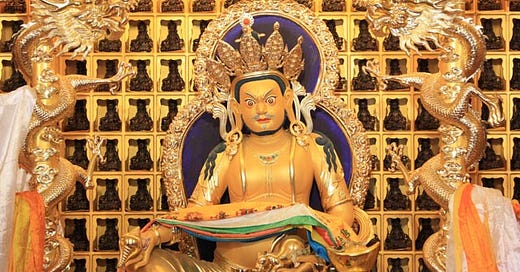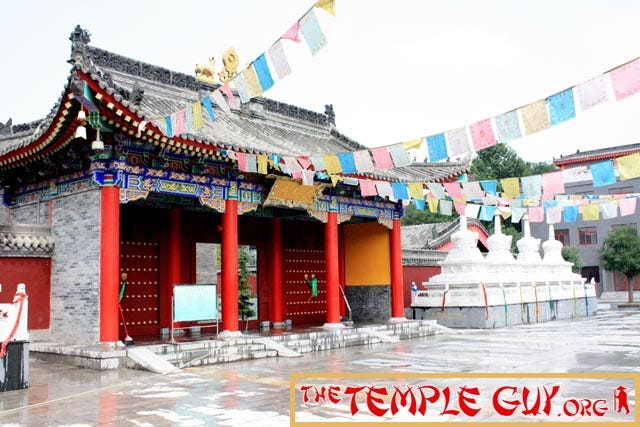I got home from the first leg of my "Chinese Pilgrimage" on August 26, 2009, and four days later I was standing in one of China's highest-rated tourist destinations, the Terracotta Army that is part of the Mausoleum of the First Qin Emperor. In just four short days (not counting the days flying to and from) we would visit this AAAAA site as well as four temples from my list, the first of which we'll see in this episode of--
TEMPLE TALES!
Xpectacular Xi'an
The modern city of Xi'an is actually one of the oldest cities in China, and--with Beijing, Nanjing, and Luoyang--Chang'an (its then-name) was one of the "Four Great Ancient Capitals of China." It was the capital that presided over the "Glorious Tang" Dynasty (618-907), as well as nearly a dozen others. You can circumambulate the central core of the city in a half-day (faster if you rent a bike!); it's surrounded by an "ancient" (but largely reconstructed) city wall. Marvel at the Bell Tower, where the two main streets cross, or the Drum Tower on West Street, where you can also wander through the Muslim Quarter, home of the first mosque built in China.
The Mountain Gate of Guangren Temple, with Tibetan stupas and prayer flags. You can just make out the deer-and-wheel on the roof.
For The Temple Guy, of course, the attraction is the temples--four listed ones inside or very near the walls, and four farther outside, as well as numerous small temples of less interest to tourists but of great interest to templers. See Episode 047 for a visit to some of these related to the life of Kukai, a Japanese monk who studied there during the Tang.
The region surrounding the city has long been a focus of imperial activity, with ancient temples, ruined palaces, and emperors' tombs. Among the last of these is the world-renowned burial place of the Qin emperor (after whose name we call China) with its guards-of-clay, the Terracotta Warriors.





